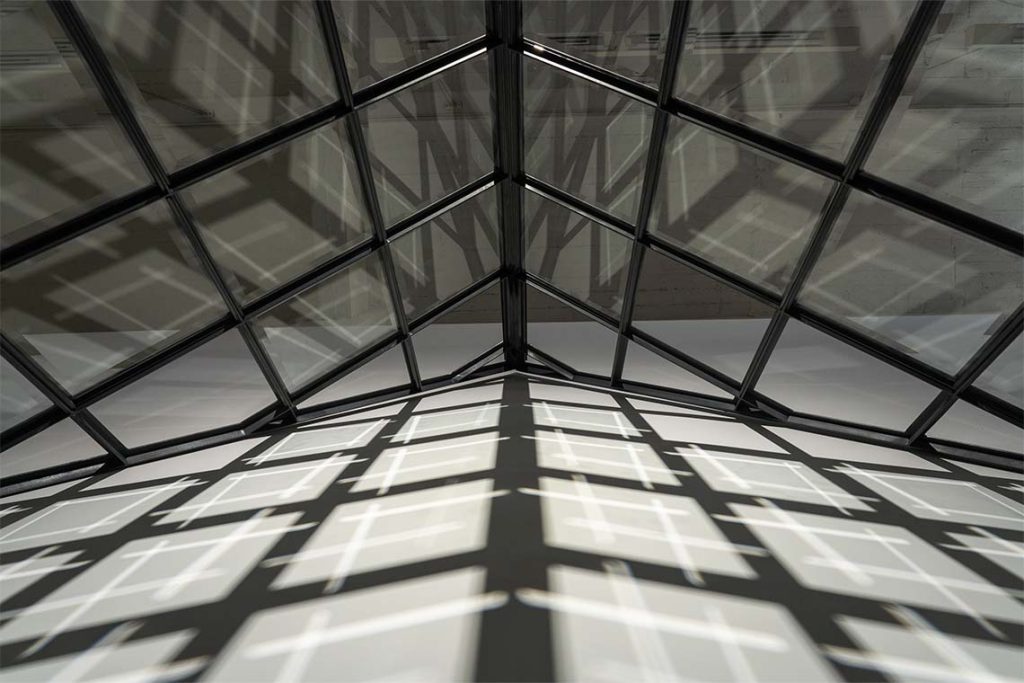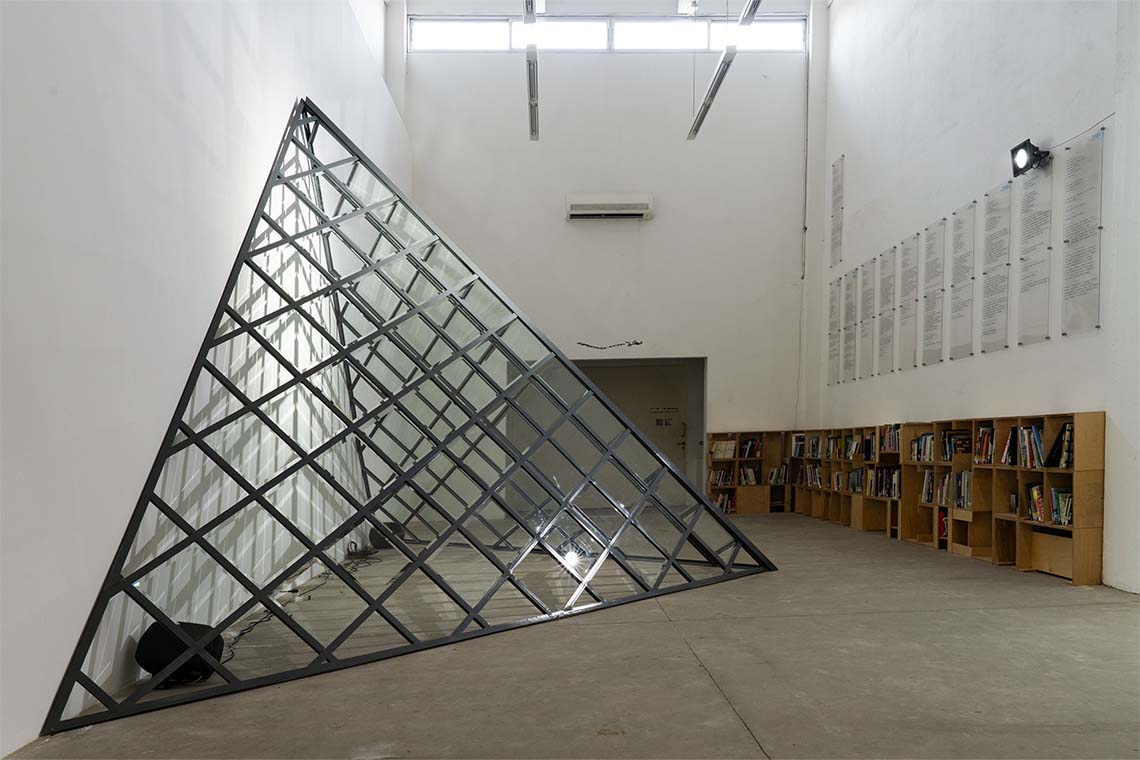A new large-scale installation by Marwan Rechmaoui, Municipalities at Beirut Art Center continues the artist’s exploration of cartography, space, demographics and urbanisation.
Taking the form of a large metal skeleton/half-pyramid set against the wall of the Beirut Art Center’s vast central hall, Marwan Rechmaoui’s Municipalities is intended as a space within a space, playing host to music performances or children’s workshops, or serving simply a place to sit and relax. Intending it as an autonomous structure to the rest of the centre, Rechmaoui seeks to probe our relationship with space, using the installation as a smaller matrix that can be extrapolated to think on our ever-shrinking access to public space, the tightening of borders and how people interact.
The work is the first iteration of BAC’s Central Hall Commission, an annual spatial intervention launched in 2023 and which invites an artist/architect/designer to transform it into a place of not only convergence and action, but also rest and contemplation. The work will stay up for six months.
“When they asked me to do the commission I was thinking that maybe I should get more creative in using a sculptural technique,” Rechmaoui tells Canvas. “I decided to experiment with the work having the ability to generate a parallel program to that of the Beirut Art Center. That is why I called it Baladiyyat, or Municipalities, to highlight the issue of self-autonomy, as the work as a whole is really about that.”
The ideas at the core of the work are all about how people interact with space, seen through the lens of autonomy and identity, from a small individual scale to something larger. “These discussions come automatically when you’re thinking about a space within a space,” adds Rechmaoui. “It’s like a package that instantly references issues of borders, territory, authority and autonomy. Living in this region, you can’t ignore these topics. In Arabic we have a saying [that translates to], ‘each person opens at their own expense or efforts’, so this is me taking the initiative and presenting these ideas through my own efforts.”

An integral part of the installation is music. Rechmaoui invited three musicians to each perform a live piece – composed specially for the project – inside the pyramid, with each piece recorded and then played in the space until the next musician performs. Charbel Haber performed during the opening of the show in late October, then in late December Fadi Tabbal presented his piece. Yara Asmar will play in late February, and in April, for the closing event, all three musicians will play together as a trio.
Rechmaoui chose them for their experimental music style – electro-heavy and utilising synthesisers or other non-conventional instruments – with Haber’s grungier metallic sounding music sitting in contrast to Asmar’s soft and dreamy sound style. “Visually, their instruments fit very well with the metallic quality of the structure,” Rechmaoui says. “The kind of music these musicians produce is also very experimental, so I felt that also suited the setting. Charbel was so excited that he played for an hour and 15 minutes! The second performance, with Fadi, was about 30 minutes and showcased his mix ambient and electronic drone music, with a touch of contemporary classical. Yara is known for using toy pianos and xylophones in her music, so her performance will be something interesting to watch.”
The musicians were given free rein to produce their pieces of music, and Rechmaoui says the musical element to Municipalities symbolises how varying and discordant sounds can still be harmonious – an analogy for the individual in a wider collective or society. He also emphasises the dynamic nature of the installation. “It’s intended to be a very interactive space,” he says. “Other than the performances, there might be kids’ workshops happening inside the installation space, or at other times it might be a reading room, with some bean bags thrown in there. It’s meant to be open and flexible.”
Although simple in appearance, Rechmaoui’s installation is certainly complex in substance, offering the perfect place and atmosphere to ponder the questions he poses. Perhaps most resonantly, it represents a proposal for how to (re)build worlds and territories that are typically rigid and predetermined into a more fluid place of refuge and contemplation.



